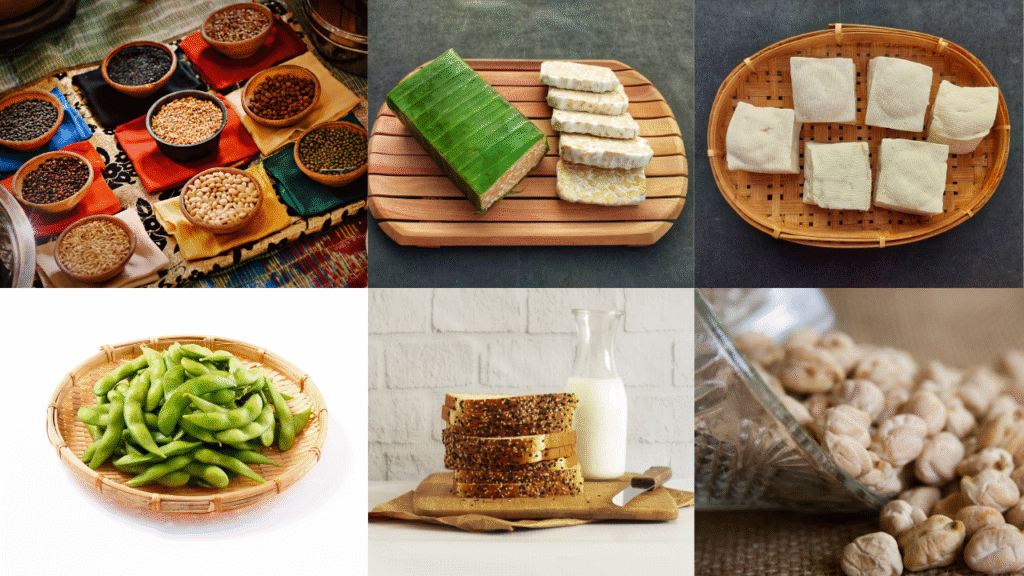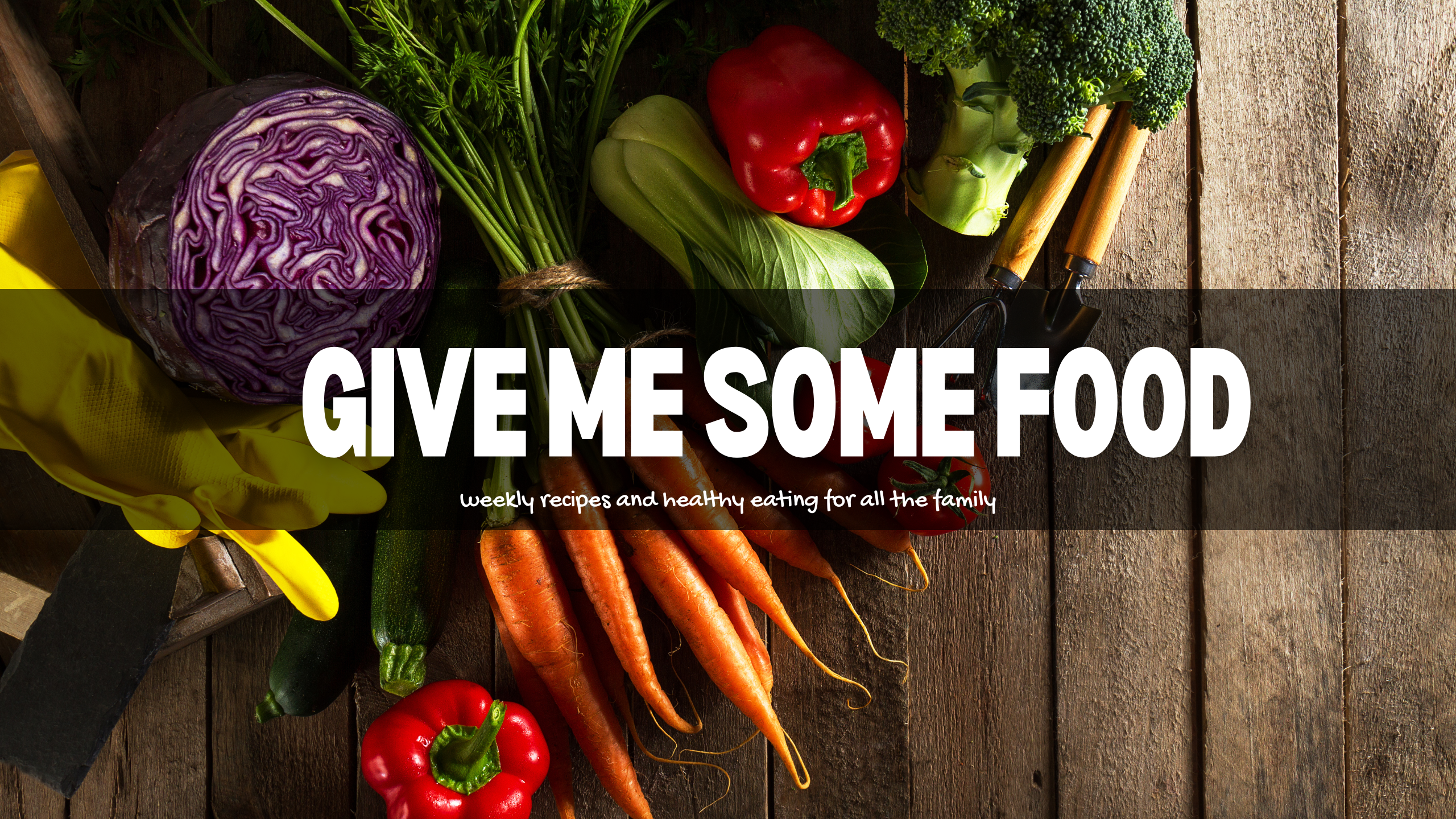Protein plays a key role in keeping our body strong and working well. It helps build muscles, fix damaged tissues, and support skin, bones, and organs. Our body also uses protein to make enzymes and hormones that control many body processes. Every part of our body—from our hair to our cells—needs protein to stay healthy.
Getting enough protein is important for people of all ages. It is especially helpful for those who are active, healing from an illness, or trying to grow stronger. Protein also helps us feel full after meals, which can be useful for managing weight. Without enough protein, we may feel weak or tired and find it harder to stay healthy.
Including protein in your daily diet helps your body stay active, protects muscles, and supports recovery. Whether you choose meat, dairy, nuts, or beans, eating good sources of protein is a smart way to care for your body.
🌟 Why Protein Matters

Protein is not just a popular diet choice—it is a vital part of human health. Our body depends on protein to grow, repair, and function properly. It helps build muscles, repair tissues, and create important body chemicals like enzymes and hormones. It also plays a key role in keeping the immune system strong and active.
In 2025, we now know that not all protein is the same. The source, quality, and even timing of protein intake can change how it affects the body. Choosing high protein foods like eggs, lean meat, dairy, beans, or nuts can make a big difference in how well your body performs daily tasks.
Another benefit of protein is its thermogenic effect. This means the body uses more energy to digest protein compared to carbs or fats. As a result, you burn more calories when you eat protein-rich meals, making it helpful for managing weight.
For those aiming to lose fat or keep muscle, high protein foods are a smart choice. They support strength, boost metabolism, and help you feel full longer after eating.
🥩 Top Animal-Based High-Protein Foods (2025 Edition)
Let’s begin with some of the most effective and popular animal-based proteins. These foods offer high bioavailability (meaning your body absorbs them efficiently), making them ideal for muscle repair and energy.
Pasture-Raised Chicken Breast
Pasture-raised chicken breast continues to be one of the most trusted high protein foods. With approximately 30 grams of protein per 100g serving, it offers a lean source of nutrition with minimal fat content. In 2025, health-conscious consumers are increasingly choosing pasture-raised options, not only for ethical farming practices but also for better quality meat.
These chickens are raised in natural environments, which often results in a more nutrient-rich product. As a result, pasture-raised chicken breast is a smart addition to diets focused on muscle repair, weight management, and overall health. Among high protein foods, it remains a favorite for meal preps, fitness plans, and healthy eating habits.
Grass-Fed Beef
Grass-fed beef is quickly rising as a premium option among high protein foods. It delivers about 25 grams of protein per 100g and contains less saturated fat than conventionally raised beef. More importantly, it is higher in omega-3 fatty acids and antioxidants, supporting both heart health and muscle recovery.

Fitness enthusiasts and athletes also appreciate its natural creatine and iron content, which help with strength and energy. As demand for clean eating increases in 2025, grass-fed beef stands out as a top-quality option in the world of high protein foods. Its rich flavor and nutritional value make it a reliable protein source for a balanced diet.
Wild-Caught Salmon
Wild-caught salmon holds a strong place in the list of high protein foods, offering around 22 grams of protein per 100g. Beyond protein, it is packed with omega-3 fatty acids, which promote heart, brain, and joint health. In recent years, there’s been a clear shift toward wild-caught varieties, as they typically contain fewer toxins than farm-raised fish.
As of 2025, many people choose wild-caught salmon not only for its clean sourcing but also for its health-boosting benefits. Its combination of lean protein and healthy fats makes it one of the most complete high protein foods. Whether grilled, baked, or added to salads, salmon supports both fitness and wellness goals.
Organic Omega-3 Enhanced Eggs
Eggs continue to be a staple in diets focused on high protein foods. A single egg offers about 6 to 7 grams of complete protein, containing all essential amino acids. Thanks to improvements in farming by 2025, many eggs now include extra omega-3s and antioxidants like lutein, making them even more beneficial.
These enhanced eggs support brain, heart, and eye health, offering more than just protein. They’re affordable, versatile, and easy to include in daily meals. Among high protein foods, organic omega-3 eggs are one of the easiest and most effective ways to meet your daily nutritional needs.
Turkey Thighs
Turkey thighs are gaining popularity among high protein foods, especially for those who enjoy a richer taste. Each 100g serving offers over 24 grams of protein and contains slightly more fat than turkey breast. This extra fat enhances flavor and helps keep you full longer, making it a great option for meals that satisfy both taste and nutrition.
In 2025, turkey thighs are favored for their balance of protein and flavor, fitting well into both muscle-building and weight management diets. Whether roasted, grilled, or used in meal preps, they stand out as one of the more flavorful choices in the category of high protein foods.
🌱 Top Plant-Based High-Protein Foods
Vegan and vegetarian lifestyles have surged in popularity, and plant-based proteins have stepped up in taste, digestibility, and availability.
Lentils (Green, Red, Black)
Lentils are one of the most nutritious and affordable high protein foods available today. A single cooked cup contains up to 18 grams of protein, along with high amounts of dietary fiber, iron, and essential vitamins. Their ability to support steady blood sugar levels makes them a smart option for both energy and health.
In 2025, sprouted lentils are becoming increasingly popular. Sprouting improves digestion and increases the bioavailability of nutrients, making lentils even more effective in plant-based diets. As one of the top high protein foods for vegetarians, lentils remain a daily staple around the world.
Tempeh (Fermented Soy)
Tempeh stands out among high protein foods with its dense protein content—approximately 19 grams per 100g serving. Made from fermented soybeans, tempeh also supports gut health through natural probiotics, making it a dual-purpose food for both muscle and digestive wellness.
In 2025, many tempeh varieties are enhanced with whole grains or seeds, adding more diversity to the amino acid profile. This makes tempeh not only a powerful protein source but also one of the most balanced plant-based high protein foods on the market.

Tofu (Organic, Calcium-Set)
Tofu has long been a key player among high protein foods, offering around 10 grams of protein per 100g serving. When it is calcium-set, it also delivers an excellent dose of bone-supporting minerals, making it especially valuable for overall health.
In 2025, tofu is available in a range of new textures and flavors, making it more appealing to those new to plant-based eating. Whether grilled, scrambled, or added to soups, tofu remains a versatile and nutritious choice among high protein foods.
Edamame (Young Soybeans)
Edamame, or young green soybeans, are another excellent addition to the list of high protein foods. A single cup of boiled edamame offers about 17 grams of plant-based protein, along with fiber, iron, and antioxidants that support heart and immune health.
Today, edamame is commonly sold in roasted or flavored snack packs, making it a convenient, protein-rich option for people on the go. This mix of taste, nutrition, and portability has helped cement its place among trending high protein foods in 2025.
Seitan (Wheat Gluten)
Seitan is a wheat-based food known for its meat-like texture and exceptional protein content—roughly 21 grams per 100g. As one of the richest vegan high protein foods, seitan is especially popular among bodybuilders and athletes who want to maintain muscle mass without eating animal products.
Modern gluten-reduced versions of seitan help minimize digestive discomfort while keeping protein levels high. These innovations make seitan an increasingly accessible and effective source of protein for those seeking high protein foods from plant-based sources.
Chickpeas
Chickpeas provide around 15 grams of protein per cooked cup, making them one of the most flexible and widely used high protein foods. They are also rich in fiber, iron, and several essential nutrients, supporting both energy and satiety.
In 2025, chickpeas are found in everything from pasta and flour to coffee creamers and desserts, giving people new ways to include protein in their meals. Their versatility and growing range of uses make chickpeas an easy favorite in the category of high protein foods.
Hemp Seeds
Hemp seeds may be small, but they are packed with nutrition. Just three tablespoons deliver about 10 grams of complete protein, making them a powerful addition to high protein foods lists. They are also rich in healthy fats, magnesium, and omega-3 fatty acids.
As of 2025, hemp seeds are commonly used in smoothies, protein bars, granolas, and plant-based protein powders. Their mild flavor and impressive nutrient content make them one of the most efficient and easy-to-use high protein foods for daily diets.
🥤 Protein Drinks and Supplements
Supplemental protein continues to be a fast, effective way to meet your goals. But not all powders are created equal. Here’s what’s trending this year:
Pea Protein Powder
Pea protein powder, derived primarily from yellow peas, has become a popular choice among allergen-conscious consumers looking for effective high protein foods. Each scoop generally offers around 20 grams of protein and is known for being both easy to digest and gentle on the stomach.
In 2025, pea protein is widely used in ready-to-drink shakes, smoothie boosters, and even baking mixes. It’s a convenient option for those who need plant-based high protein foods without soy, dairy, or gluten. Its neutral taste and digestibility make it a staple in many fitness and wellness routines.

Whey Protein Isolate (Hydrolyzed)
Whey protein isolate, especially in hydrolyzed form, remains one of the most trusted high protein foods for muscle recovery and athletic performance. This type of whey is pre-digested, allowing for faster absorption and quicker nutrient delivery to muscles after intense exercise.
By 2025, hydrolyzed whey isolate is considered a premium choice in sports nutrition. With its high protein content and quick digestion, it is widely recommended for post-workout use. For those seeking fast-acting high protein foods, whey isolate continues to set the gold standard.
Algae Protein
Algae protein is gaining popularity as one of the most sustainable high protein foods available today. It offers a complete amino acid profile and is highly digestible, making it ideal for individuals with sensitive digestive systems or specialized dietary needs.
Although it comes at a higher price point, algae protein is valued for its eco-friendly production methods. In 2025, it is especially favored by performance athletes and environmental advocates who seek effective high protein foods with a smaller ecological footprint.
Oat-Based Protein Blends
While oats are not naturally high in protein, advancements in food processing have led to the creation of oat-based protein blends that are rich in plant-based nutrition. These blends are carefully formulated to concentrate protein while eliminating gluten and soy, making them a safe choice for many.
In 2025, oat protein powders are becoming a reliable source of high protein foods for people following a plant-forward lifestyle. With mild flavor and versatility, they work well in smoothies, breakfast bowls, and baking recipes, offering a new way to enjoy plant protein without common allergens.
🌍 Sustainability and Protein in the Future
With climate change top of mind, the sustainability of protein sources is more important than ever. Insects, algae, lab-grown meat, and precision fermentation (creating proteins from microbes) are now entering markets worldwide.
Key sustainable picks for 2025:
Mycoprotein (from fungi) – meat-like and rich in fiber
Insect protein – eco-friendly and high in protein
Precision fermented dairy – no animals needed, yet mimics real dairy protein
✅ Summary: The Best High-Protein Foods
| Food Type | Protein (Per 100g) | Benefits |
|---|---|---|
| Chicken Breast | 30g | Lean, versatile |
| Lentils | 18g | Fiber-rich, plant-based |
| Salmon | 22g | Omega-3s + protein |
| Tempeh | 19g | Fermented, gut-friendly |
| Eggs | 6g (per egg) | Complete, affordable |
| Tofu | 10g | Vegan and adaptable |
| Whey Isolate | 25g (per scoop) | Fast absorption |
| Hemp Seeds | 10g (3 tbsp) | High in omega-3s |
| Seitan | 21g | Meat-like texture |
Conclusion

Protein is one of the most important nutrients the body needs to stay healthy and strong. It helps build and repair tissues, including muscles, skin, and organs. Every cell in the body contains protein, and it plays a key role in making enzymes, hormones, and other essential body chemicals. Without enough protein, the body may struggle to function properly, leading to weakness, fatigue, and poor immunity.
Protein is especially important for people who are growing, recovering from illness, or active in sports and exercise. It helps repair muscle damage, supports growth, and keeps you full longer, which can help with weight control. Getting enough protein each day supports your energy levels, keeps your body balanced, and helps prevent muscle loss as you age. Whether from plant or animal sources, adding quality protein to your daily meals is a smart and essential choice for good health.
FAQs
- What are high protein foods ?
High protein foods are foods that contain a large amount of protein per serving. These include meat, fish, eggs, dairy, legumes, seeds, and plant-based protein powders. They help support muscle, metabolism, and overall health. - Why is protein important in the diet ?
Protein is essential for building and repairing tissues, supporting the immune system, and maintaining muscle mass. It also helps you feel full longer, which can aid in weight management. - Can high protein foods help with weight loss ?
Yes, high protein foods can support weight loss by increasing satiety and boosting metabolism. They help reduce hunger and support muscle retention during calorie reduction. - What are some plant-based high protein foods ?
Examples include lentils, chickpeas, tofu, tempeh, edamame, seitan, hemp seeds, and pea protein powder. These are great for vegetarians and vegans. - How much protein should I eat daily ?
Protein needs vary by age, activity level, and goals, but a common guideline is 0.8–1.2 grams of protein per kilogram of body weight for adults. Athletes may need more.


